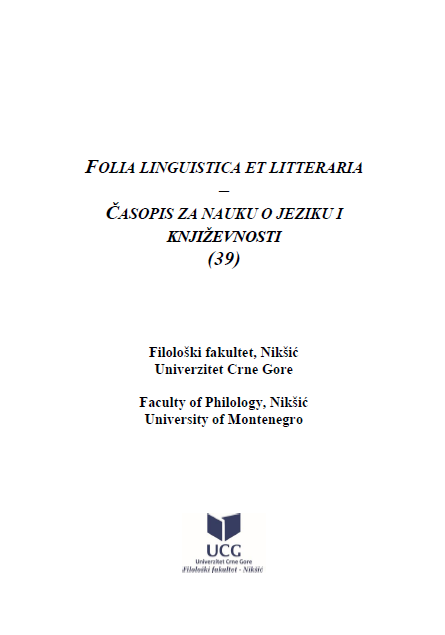TVORBENA PRODUKTIVNOST SKRAĆENICA U ITALIJANSKOM I SRPSKOM/CRNOGORSKOM JEZIKU: DERIVACIJA SUFIKSACIJOM
WORD-FORMATION PRODUCTIVITY OF ABBREVIATIONS IN ITALIAN AND SERBIAN / MONTENEGRIN: DERIVATION BY SUFFIXATION
Author(s): Radmila LazarevićSubject(s): Morphology, Lexis, South Slavic Languages
Published by: Filološki fakultet, Nikšić
Keywords: abbreviations; acronyms; derivation; derivational productivity; initialisms; Italian; Montenegrin; Serbian; word formation; suffixation
Summary/Abstract: Everyday changes on a global level, with the more and more accelerated rhythm of life, are reflecting themselves on the linguistic reality of modern languages too. Among their consequences is also the more prominent role of abbreviations, which make a sentence more synthetic by shortening multiword expressions, no matter if the communication is verbal or written. The research is focused on the comparison between the abbreviations in modern Italian and those in Serbian and Montenegrin language, as stems for derivation by nominal, adjectival, and verbal suffixes. The approach is contrastive, and for the corpora were used mostly materials extracted from the daily press, as well as dictionaries of neologisms in the case of Italian corpus. For the Italian corpus, the dictionaries used were Neologismi: Parole nuove dai giornali (2009) by Istituto Treccani, with an updated online version of that dictionary on the publisher’s site https://www.treccani.it/magazine/lingua_italiana/neologismi/, as well as the database ONLI: Osservatorio Neologico della Lingua Italiana (https://www.iliesi.cnr.it/ONLI/), which collects materials mostly from daily and weekly press. Several studies on abbreviations were also very helpful as the source for examples of suffixation. Serbian and Montenegrin press was analyzed as one corpus, as there are virtually no differences between these languages as far as abbreviations are concerned. The latter corpus relies mostly on online versions of Serbian and Montenegrin daily press (Vijesti, Pobjeda, Dan, Novosti, Telegraf, Politika, and so on), with several examples taken from social media, blogs and web portals, for the most part through the web site Kontekst.io (https://www.kontekst.io/) which for Serbian corpus uses database srWaC (Serbian Web, https://www.clarin.si/noske/run.cgi/corp_info?corpname=srwac&struct_attr_stats=1&subcorpora=1). As in printed Serbian and Montenegrin literature were found only older and, in some cases, outdated examples, it was necessary to complement this corpus with newer and more up-to-date materials. In the corpora analysis, neologisms derived from acronyms by suffixation were of particular interest, as an indicator of vitality and productivity of these lexical items in modern language. In neither of the observed languages nomenclature and classification of this type of lexical items are unanimous and coherent, so we opted for the terminology and classification agreed on by most of the consulted sources. Not all types of abbreviations can be used as stems for derivation, therefore the research was focused exclusively on the types which can be productive for suffixation. As for the discrepancies in terminologies and possible ambiguations in Italian and Serbian linguistics (Montenegrin sources make almost no mention of abbreviations), they require some clarification.
Journal: Folia Linguistica et Litteraria
- Issue Year: 2021
- Issue No: 39
- Page Range: 207-225
- Page Count: 19
- Language: Serbian

